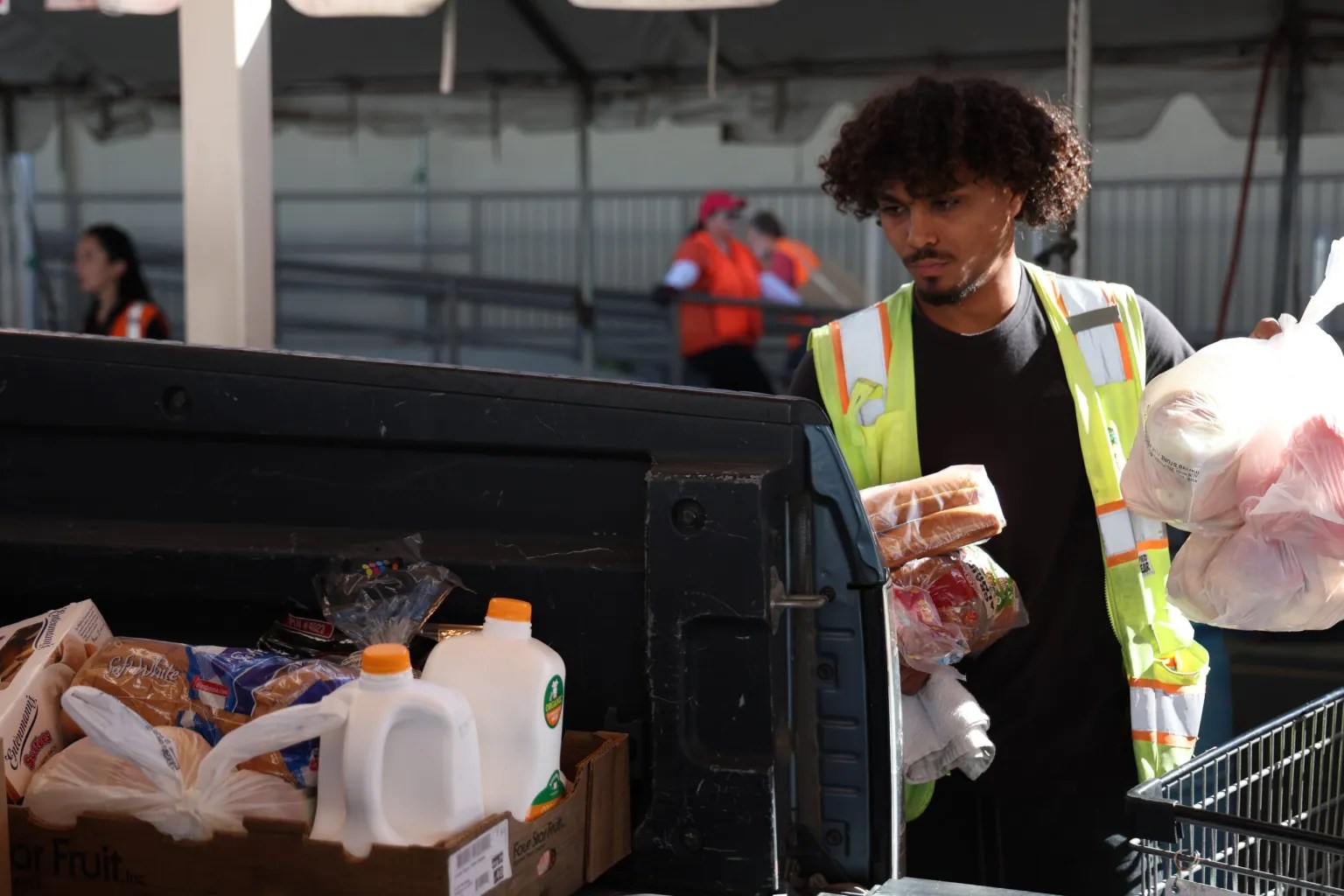
Shi Bradley/Cronkite News

Audio By Carbonatix
Federal food benefits have been flowing again since the government shutdown ended last week. But for millions of recipients nationwide and tens of thousands in Arizona like Mindy Torres, the restart is only a temporary reprieve.
New work requirements could mean that her only reliable source of grocery money will soon disappear.
“I have what I need for today” but without the monthly food aid, “there’ll definitely be an issue,” said Torres, who left Phoenix three years ago when a rent increase became unaffordable.
She and her husband bought an RV and settled on a friend’s 40-acre property in Show Low. The trailer now sits 28 miles down a dirt road with no running water, an arrangement that fits the government definition of homeless.
When news happens, Phoenix New Times is there —
Your support strengthens our coverage.
We’re aiming to raise $30,000 by December 31, so we can continue covering what matters most to you. If New Times matters to you, please take action and contribute today, so when news happens, our reporters can be there.
But in July, Congress removed homelessness as an exemption to work requirements under the Supplemental Nutrition Assistance Program. The law took effect Nov. 1, with a three-month grace period.
There are 42 million SNAP recipients nationwide, including 775,813 in Arizona as of the state’s October count.
The tighter eligibility rules will reduce the rolls by 2.4 million nationwide, according to Congressional Budget Office projections. In Arizona, about 124,000 recipients are at risk of losing benefits, according to an analysis from the left-leaning Center on Budget and Policy Priorities.
The average monthly payment in Arizona is $185.96 per person, according to the state’s Department of Economic Security, which handles SNAP payments. About 40% of recipients nationwide are children.
The program costs the federal government about $100 billion a year. The One Big Beautiful Bill Act signed by President Donald Trump is projected to slash $186 billion over 10 years by shifting administrative costs to states and tightening eligibility.
The law requires able-bodied adults ages 18 to 64 to prove they are working at least 80 hours a month, enrolled in school or participating in a job-training program to receive SNAP benefits.
Those who can’t show proof of eligibility are limited to three months of food aid in a three-year period. Previously, the work requirement ended at age 55. The new law also erases exemptions for veterans, unhoused individuals and people 18 to 24 who were in foster care when they turned 18. Adults have been exempt if they have a child at home under age 18. Going forward, the cutoff is 14.
The law also ends decades of eligibility for refugees, asylum seekers and immigrants granted legal protection for humanitarian efforts. Those changes will affect victims of sex trafficking and visa holders who worked with the U.S. military in conflict zones. These changes account for about 90,000 people who will lose benefits.
For Torres, the requirement to work through age 64 hits home. She has a bone disease that precludes her from working, she said. She has been waiting for a disability determination that would keep her eligible.
“If I just barely bump into something, I’m going to break a bone,” she said. “I’m in constant pain.”
She and her husband currently receive $279 a month. They also rely on local charities.
“You’re grateful to get what you get, but it’s not like going grocery shopping,” she said. “You’ll get four boxes of mac and cheese. But if you don’t have money for bread or for milk and butter, how are you supposed to make a box of mac and cheese?”
The U.S. Department of Agriculture withheld SNAP funds for November until Congress reopened the government on Nov. 12, after a record-setting 43-day shutdown. Two days later, the USDA issued a memo to states affirming that the three-month clock started on schedule, on Nov. 1, despite the shutdown.
SNAP recipients contacted since then say they have received their November benefits. That should be true for all Arizona recipients, DES spokesperson Brett Bezio said Thursday.
Like agencies that handle SNAP in other states, DES says it has sent notices about the new work requirements. Some but not all recipients Cronkite News spoke with were aware of the changes.
In Chinle, part of the Navajo Nation, resident Alexis Kinlichini was surprised when told of the new rules. Unemployed, the 37-year-old said she relies on the $284 she receives each month.
Without SNAP, she said, she would “probably starve.”
Washington correspondent Isabella Gomez contributed to this report.
This article first appeared on Cronkite News and is republished here under a Creative Commons Attribution-NoDerivatives 4.0 International License.